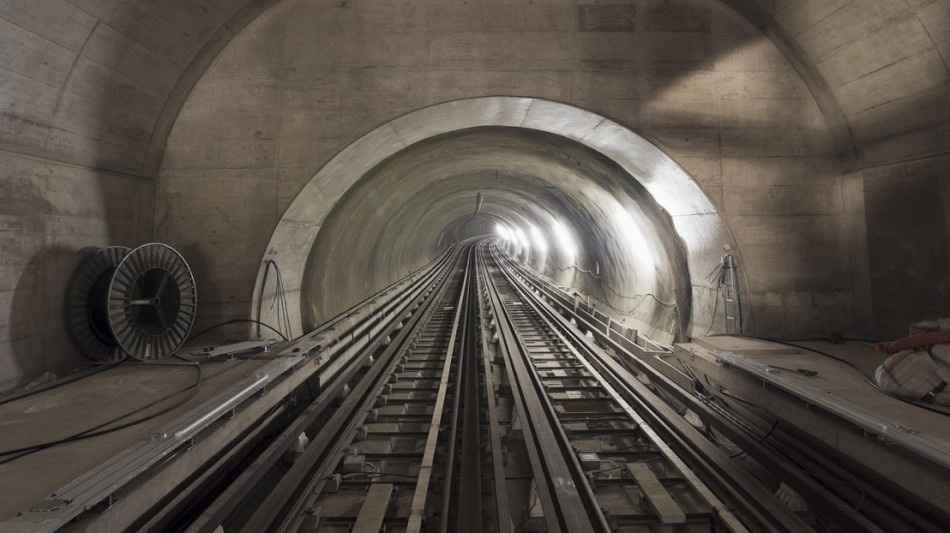Jun 25 2019
Heat transfer occurs in many ways in rail tunnels. A common example is when trains brake or speed up, they generate heat that warms the immediate air. That hot air mixes with the other air present in the tunnel as well as with heat emanating from the ground.
 The actual tunnel of the M2 metro line, in Lausanne. © Maurice Schobinger
The actual tunnel of the M2 metro line, in Lausanne. © Maurice Schobinger
So far, engineers have not been able to correctly measure the amount of heat that tunnel air holds. Scientists at EPFL’s Soil Mechanics Laboratory (LMS) have solved that issue by precisely approximating the convection heat transfer coefficient. Their findings have been reported in Applied Thermal Engineering.
This innovation opens the door to innovative applications comprising of so-called energy tunnels that can provide energy to built environments. The team also tested its model on Lausanne’s future M3 metro line which, once done, will transport passengers between the city’s train station and the Blécherette district to the north.
Enough heat for 1,500 apartments
Our research shows that fitting the heat-recovery system along 50–60% of the planned route – or 60,000 square meters of tunnel surface area – would cover the heating needs of 1,500 standard 80 m2 apartments, or as many as 4,000 Minergie-certified energy-efficient units.
Margaux Peltier, Scientific Assistant, LMS, EPFL
Peltier’s Master’s research forms the foundation for the article. The system also permits heat to be stored so it can be conveyed to homes when required. “Switching from gas-fired heating would cut the city’s CO2 emissions by two million tons per year,” adds Peltier. Her calculation does not take into account the savings garnered from metro stations or at the scheduled rolling-stock depot in the north of the city, which could also gain from the system.
As the temperature naturally steadies in underground tunnels, extra cold or heat is displaced to the surface. The resulting warm airflow can commonly be felt at the entrances of a metro tunnel. The concept underneath the innovation is to harness this extra warmth along with the heat naturally available in the ground.
The system works in quite like a refrigerator, with plastic pipes having heat-transfer fluid, or just water, positioned at regular intervals within the concrete tunnel walls and linked to a heat pump. In winter, cold water will be supplied into the pipes, emerging hot at the surface. The opposite will take place in summer. According to the scientists, the system would be inexpensive and energy-efficient to set up and would have a lifecycle of between 50 and 100 years, with just the heat pumps having to be swapped every 25 years.
Heating and air-conditioning
Once fitted, heat from the tunnel would take care of up to 80% of the heating requirements of local apartments during winter, with the shortfall perhaps coming from other renewable sources. But what makes geothermal systems like these standout is that they are effective in summer too. “The tunnel would act like a highly reliable, year-round heating and air-conditioning system,” says Peltier, adding that it would make a true difference in keeping Lausanne’s homes cool when the weather is hot. The system could even chill the ice rink scheduled to be constructed in the city’s new Métamorphose eco-district.
This article underscores the fact that energy-tunnel technology is mature and could be deployed at district-wide scale. It remains to be seen whether Swiss companies are now prepared to take the lead. Globally, we’ve only seen systems like these used on test sections so far.
Lyesse Laloui, Head of LMS, EPFL
The scientists have shown their findings to Lausanne’s utility agency (SIL), local public transport operator (TL), the Canton of Vaud, the chief contractor involved with the new metro line, and the City of Lausanne.